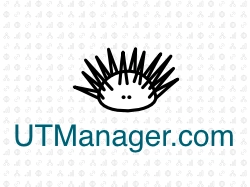While TAM shows the full theoretical market size, SAM answers the question:
“How much of this market can we actually reach and sell to, given our current offerings and resources?”
SAM takes into account factors like:
- Geographic Reach: Markets or regions where the company operates or can legally sell.
- Product or Service Applicability: Segments that align with the company’s current product features and value proposition.
- Target Customer Segments: Specific industries, demographics, or firmographics that the company is equipped to serve.
- Distribution & Operational Capacity: Whether the business has the infrastructure, partnerships, or staffing to support sales and delivery.
SAM is a critical intermediate step between TAM (Total Addressable Market) and SOM (Share of Market), providing a more actionable view of market opportunity for strategic planning, forecasting, and prioritization.
Example: Imagine a telehealth software company with a TAM of $800 million across all licensed medical providers in the U.S. However, the company’s platform currently supports only English-speaking clinics in urban areas and specializes in mental health practices. Based on these constraints, the SAM might be $250 million—representing the specific segment they can actually target and serve today.
Why SAM matters:
- Strategic Focus: Helps businesses prioritize markets and customer segments with the highest potential impact.
- Realistic Forecasting: Provides a grounded basis for setting achievable revenue and market share goals.
- Market Entry Decisions: Informs go-to-market strategies and expansion planning by clarifying which parts of the market are currently accessible.
- Resource Allocation: Guides marketing, sales, and product investment toward the most reachable opportunities.
- Investor Communication: Demonstrates a thoughtful and data-driven understanding of market opportunity beyond broad TAM numbers.
Best practices for calculating SAM:
- Start with TAM: Clearly define the total market, then layer on realistic constraints to narrow the focus.
- Segment strategically: Break down SAM by geography, vertical, customer type, or product line for more actionable insights.
- Use reliable data: Combine internal data, market research, and third-party reports to estimate reachable market size accurately.
- Revisit regularly: As the company expands capabilities (e.g., launches new features or enters new regions), SAM should be recalculated to reflect the broader reach.
- Avoid underestimation: While SAM is narrower than TAM, it should still reflect ambitious but realistic opportunities—not just the current customer base.
Pro Tip: SAM often evolves over time. As companies expand product offerings, geographic coverage, or operational capacity, their SAM grows too. This makes SAM a valuable metric not only for assessing current opportunity but also for planning future market expansion.
